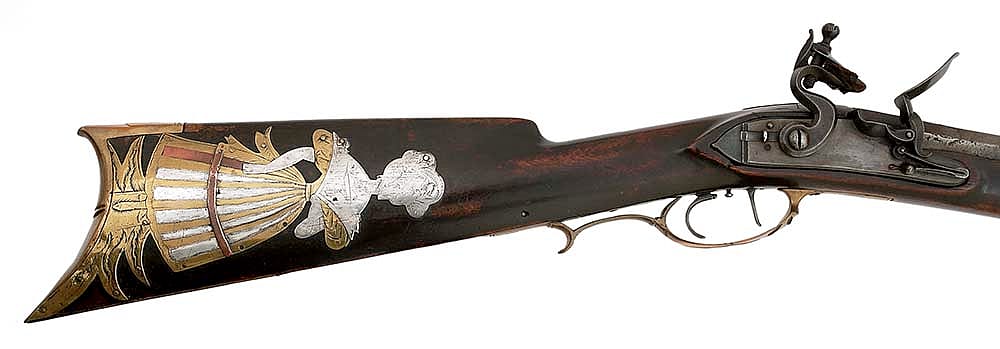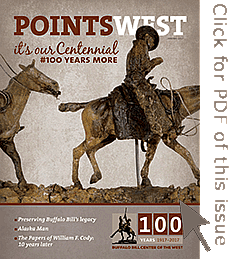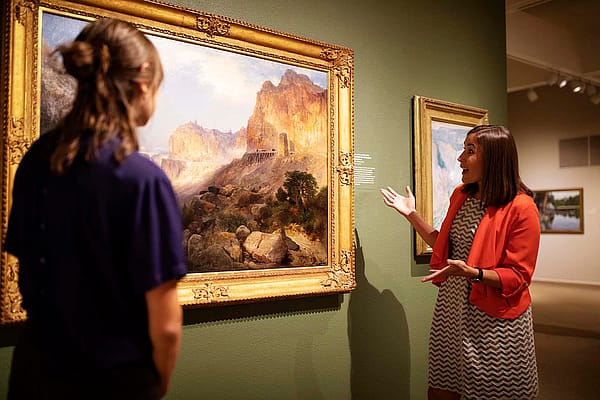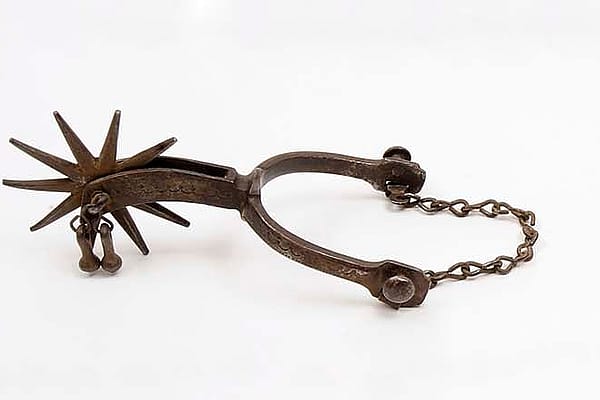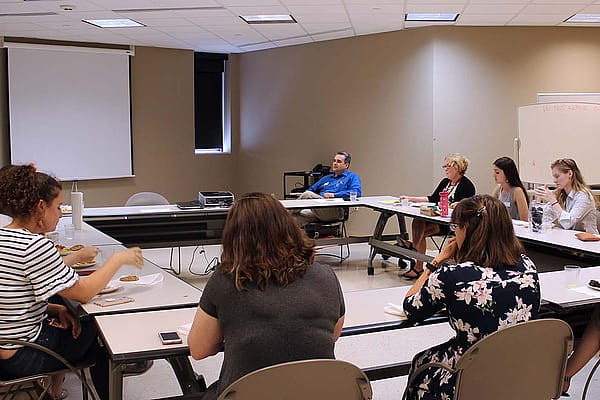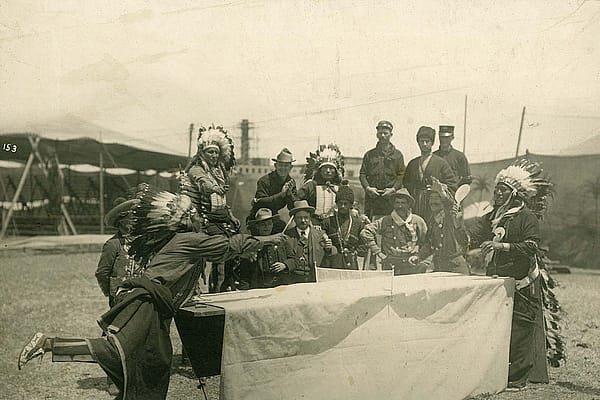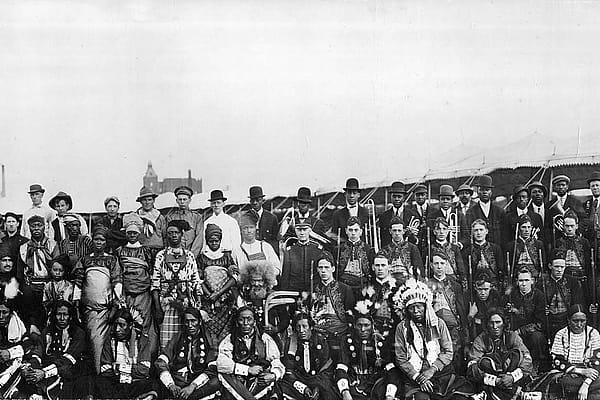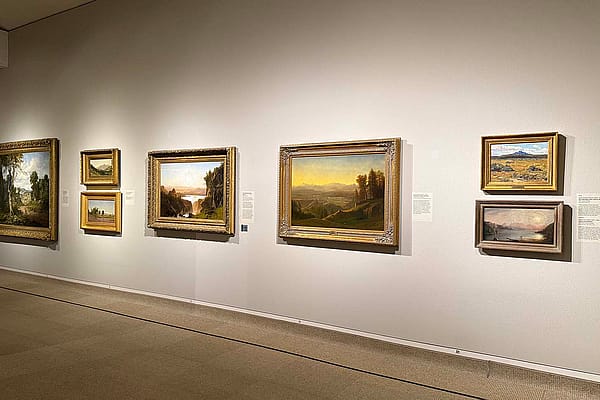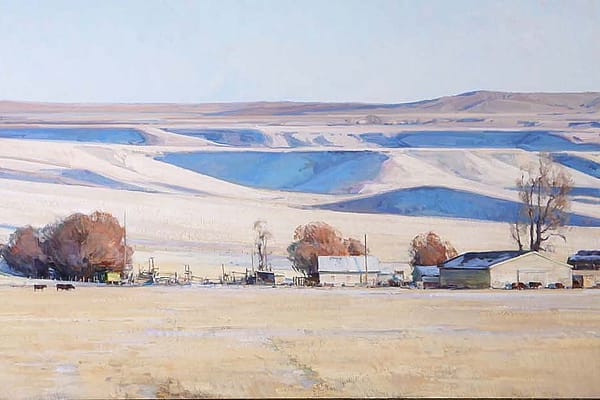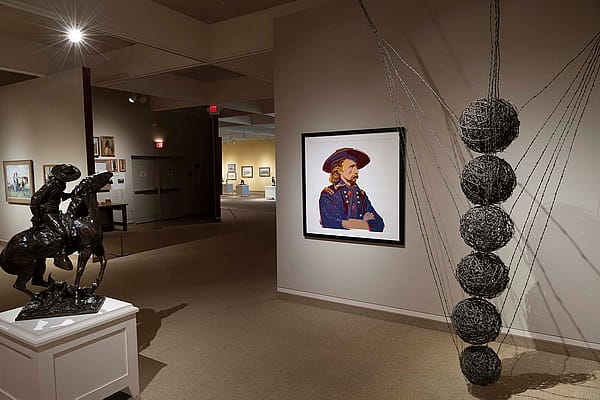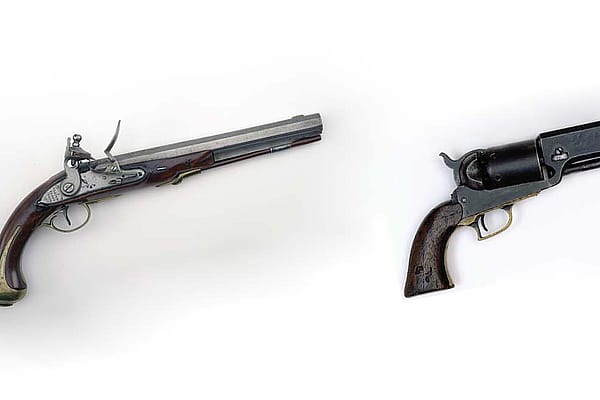
Guns as Art – Points West Online
Originally published in Points West magazine
Spring 2017
Guns As Art
By Gene Ball
From the Archives: Gene Ball, the Buffalo Bill Center of the West’s former education coordinator, penned this article in 1984.
As with his other possessions, man has always regarded his weapons as extensions of himself and his unique personality.
Nowhere can this be seen more clearly than in the embellishments found on firearms. The desire for elegance, design, balance, and decoration—far beyond that demanded to achieve optimum function—is abundantly evident. A maker of guns, or any other product for that matter, who has no eye for aesthetics will be the last to succeed or be remembered.
Personalizing firearms can take many forms. American Indians hammered brass tacks into the wooden stocks to make pleasing designs. Sixteenth-century German craftsmen inlaid intricately carved pieces of stag-horn. Today, engravers create hunting scenes in the hardest of metal surfaces.
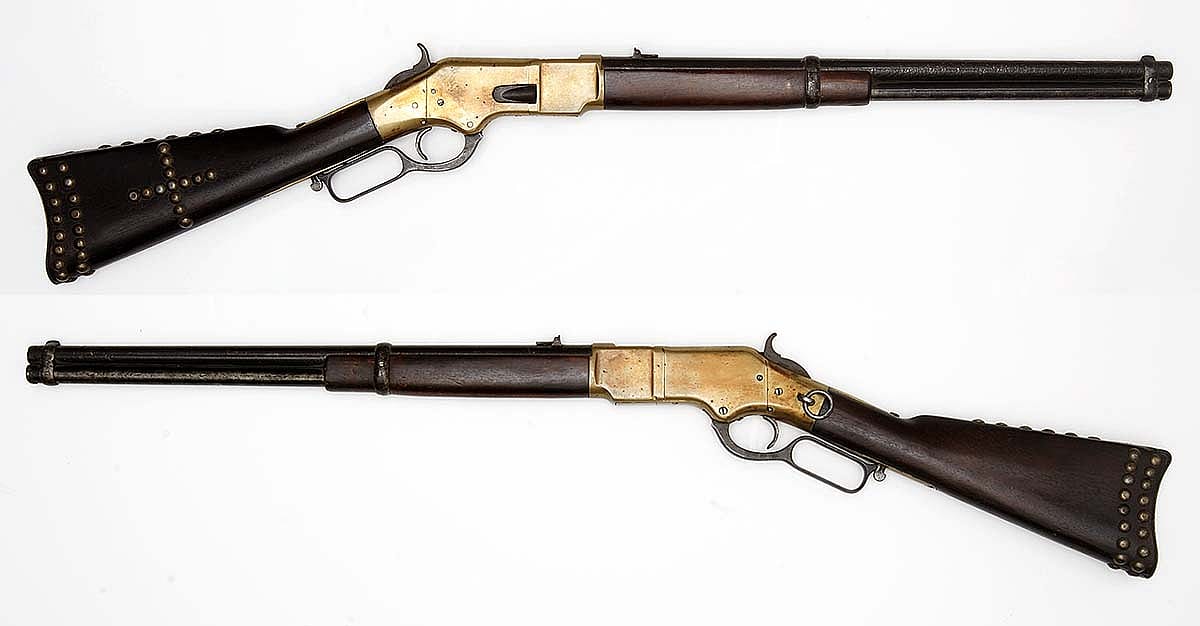
The name of the first man to decorate a firearm is as lost to history as the name of the first man to fire one. It is certain, however, that not many years separated the two occurrences. Cannons, the first of the new projectile arms, appeared in the early 1300s. The first handheld firearms followed about fifty years later, and engraving as an embellishment dates to this period, too.
For hundreds of years, handsomely embellished guns were standard gifts to exchange between sovereigns and noblemen. This work called for the finest craftsmen of the day. Yet, much of what they produced is impossible to credit. These early, anonymous artisans combined imagination and ability to transform prosaic metal and wood surfaces into diminutive areas of artistic beauty. Elaborately engraved stag-horn was inlaid in gunstocks. Flint cocks were fashioned into mythical monsters, allegorical dragons, or ornate pecking fowls. Hunting scenes were carved in the wood and engraved on the metal.
To impress the recipient with the lavish gift, function was often secondary to decoration. Perhaps, that was fitting, though. For, in any case, the firearm spent more time in a display rack than in the field.
Like other arts and crafts, styles varied and even the popularity of ornamentation in general rose and fell in different periods. However, when it was popular, there was a demand for new ideas much like the modern demand for new models of nearly any product in the marketplace. As early as the sixteenth century, pattern books existed in Germany, which featured a supply of ornamental designs on printed sheets.
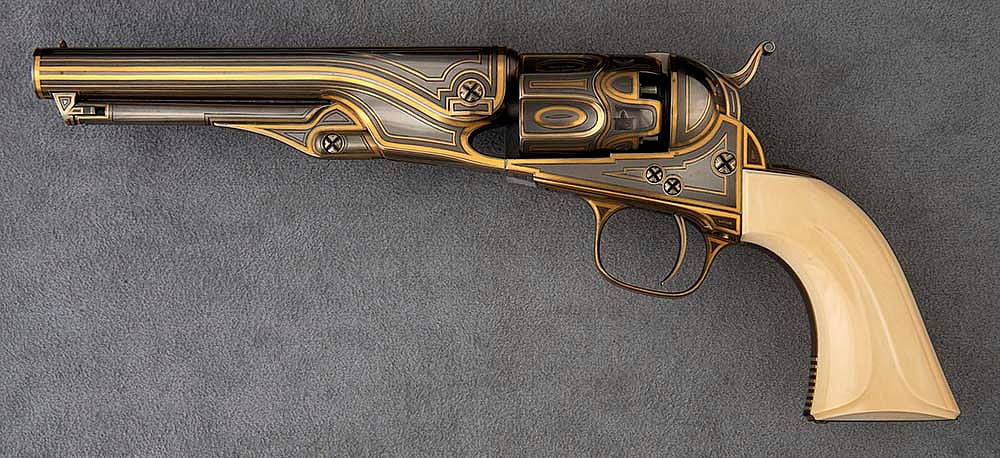
Aside from its aesthetic quality, ornamentation has become useful as a method of dating early firearms. Though some patterns were used for a century or more, others came into and went out of favor rather quickly, thus providing an important clue to the time of manufacture.
The decorative work also provides strong evidence to determine the gun’s place of origin. However, when it comes to identifying the artists or craftsmen who created the embellishment, anonymity is the rule. Initials and signatures often appear, especially on guns dating from the late seventeenth century, but these usually refer to the gunmaker rather than an artist-employee. The decorators were not necessarily the gunmakers themselves. In the eighteenth century, a richly embellished arm might exhibit the work of as many as a half dozen artists, from wood carver to goldsmith to engraver—too many to identify.
The long years of training and apprenticeship necessary to master their art or craft apparently brought these craftsmen little, if any, special notice or artistic recognition. It was as though they were simply shophands doing a day’s labor. Others failed to see them as possessors of the talent and imagination to do masterful work in miniature on irregularly shaped, difficult-to-work surfaces which had the hardness of wood, horn, iron, and steel.
A good, recent example of this situation on the American scene is the Ulrich family who came to the United States in 1852 from Germany. For almost a century, the Ulrich sons and grandsons reigned supreme in the realm of arms engraving, both in terms of quality and quantity. Six of the seven engraving members of the family were employed by Winchester and were largely responsible for the fine work found on special rifles produced by the company. Yet, in many cases, there are no signatures, and the work must be “attributed” based on comparison to known works.
Conrad F. Ulrich (1844–1925) gets the credit for beginning the family tradition of superb engraving. His son, George, was the last. Despite their masterful technique and aesthetic sense of design and balance, none in the Ulrich family received any public acknowledgement or acclaim during their lifetimes. George was the first to receive widespread publicity and identification as master of his medium. In 1950, Outdoor Life magazine published a detailed, thoroughly illustrated article about his work. Unfortunately, Ulrich died in 1949.

Model 1866 Winchester, ca. 1873. Engraved by master artisan Conrad F. Ulrich featuring an unusual decorative border at the wrist using a Grecian key pattern, and a rare depiction of Diana, goddess of the hunt. Other panels depict elk, deer, bear, buffalo, and rabbit. Exhibited at the Centennial Exposition, Philadelphia, Pennsylvania, 1876. Gift of Olin Corporation, Winchester Arms Collection. 1988.8.3283 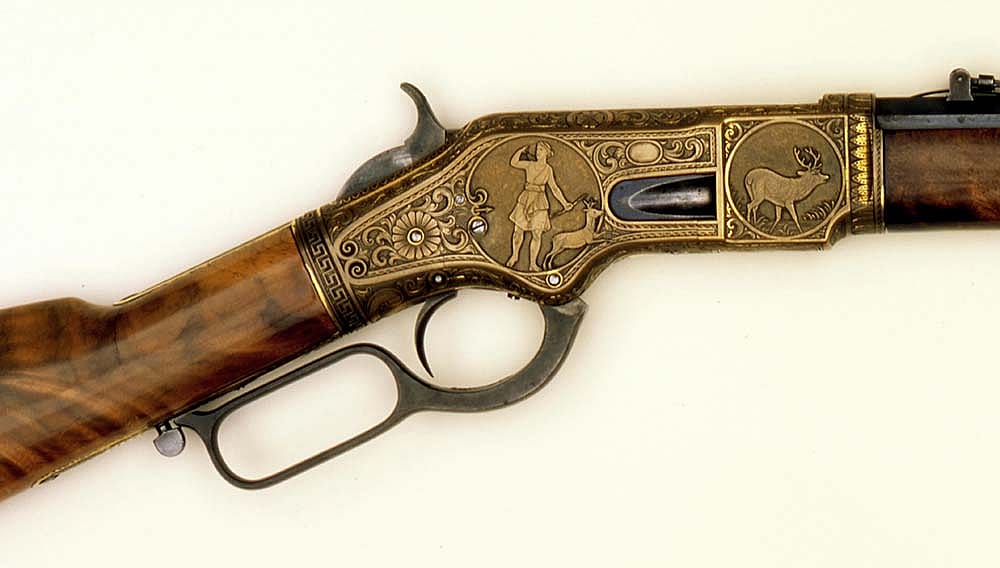
Detail of reverse side of the Model 1866 Winchester, shown above, engraved by Conrad F. Ulrich. 1988.8.3283
Today, the work of these often-nameless artists and craftsmen of the past is prized, studied, sought after, and highly valued. So, too, is the work of their twentieth-century counterparts whose artistic embellishments help bring distinction to individual guns that would otherwise be carbon copies of the thousands produced on the same assembly line.
Quality engravers might now be labeled an endangered species. To be an engraver of firearms requires one to be a sculptor in a most difficult medium—modern steel. There are easier roads to take for those with an artistic bent.
Gene Ball served as the Center’s education coordinator in the 1980s. He was instrumental in organizing both the first Plains Indian Museum Powwow in 1981 and the first Cowboy Songs & Range Ballads event at the Center in 1982. He penned numerous articles for the Center’s newsletters of that time.
Post 257
Written By
Nancy McClure
Nancy now does Grants & Foundations Relations for the Center of the West's Development Department, but was formerly the Content Producer for the Center's Public Relations Department, where her work included writing and updating website content, publicizing events, copy editing, working with images, and producing the e-newsletter Western Wire. Her current job is seeking and applying for funding from government grants and private foundations. In her spare time, Nancy enjoys photography, reading, flower gardening, and playing the flute.

